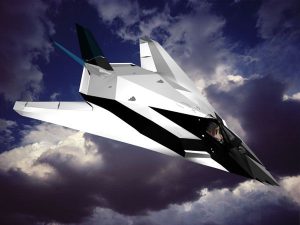Stealth aircraft have revolutionized modern warfare by allowing nations to conduct missions with enhanced stealth capabilities, reducing the risk of detection and increasing operational effectiveness. As technology continues to advance, the future of stealth aircraft holds exciting possibilities. In this article, we will explore the advancements and innovations that are shaping the future of stealth aircraft.

One key aspect of stealth technology is the development of advanced coatings that minimize radar signatures. In the future, we can expect to see even more effective coatings that provide enhanced stealth capabilities. These coatings may incorporate metamaterials or nanotechnology to manipulate electromagnetic waves and further reduce radar cross-sections.
Future stealth aircraft may employ adaptive camouflage systems that enable them to blend seamlessly into their surroundings. Inspired by nature, these systems could utilize sensors and high-resolution displays to mimic the appearance of the sky or other environmental elements, rendering the aircraft virtually invisible to the naked eye.

As stealth aircraft continue to evolve, so do the threats they face. In response, future stealth platforms may incorporate directed energy weapons (DEWs) for defensive and offensive purposes. DEWs, such as laser-based systems, could provide rapid and precise engagement capabilities against enemy threats, further enhancing the aircraft’s survivability and combat effectiveness.
Advancements in artificial intelligence are expected to play a significant role in the future of stealth aircraft. AI algorithms can assist in real-time threat assessment, enabling faster decision-making and improved situational awareness. Additionally, AI could optimize flight performance, reduce maintenance requirements, and enhance overall mission effectiveness.

The ability to fly at hypersonic speeds is another area of development for future stealth aircraft. Hypersonic platforms would provide rapid response capabilities and the ability to strike targets with unmatched speed. These aircraft could potentially utilize scramjet engines or other propulsion systems to achieve hypersonic velocities, enhancing their strategic impact on the battlefield.
The future of stealth aircraft is not limited to manned platforms alone. Unmanned stealth drones will likely become increasingly prevalent, offering extended mission durations, reduced risk to human pilots, and the ability to operate in hostile environments. These unmanned systems can collaborate with manned stealth aircraft, forming a networked force that maximizes their combined capabilities.

The future of stealth aircraft promises exciting advancements and innovations that will revolutionize air warfare. From advanced coatings and adaptive camouflage to AI integration and hypersonic capabilities, these developments will enhance stealth aircraft’s capabilities, ensuring they maintain their dominance on the modern battlefield. With ongoing research and development, the next generation of stealth aircraft will push the boundaries of technology, shaping the future of aerial warfare.






